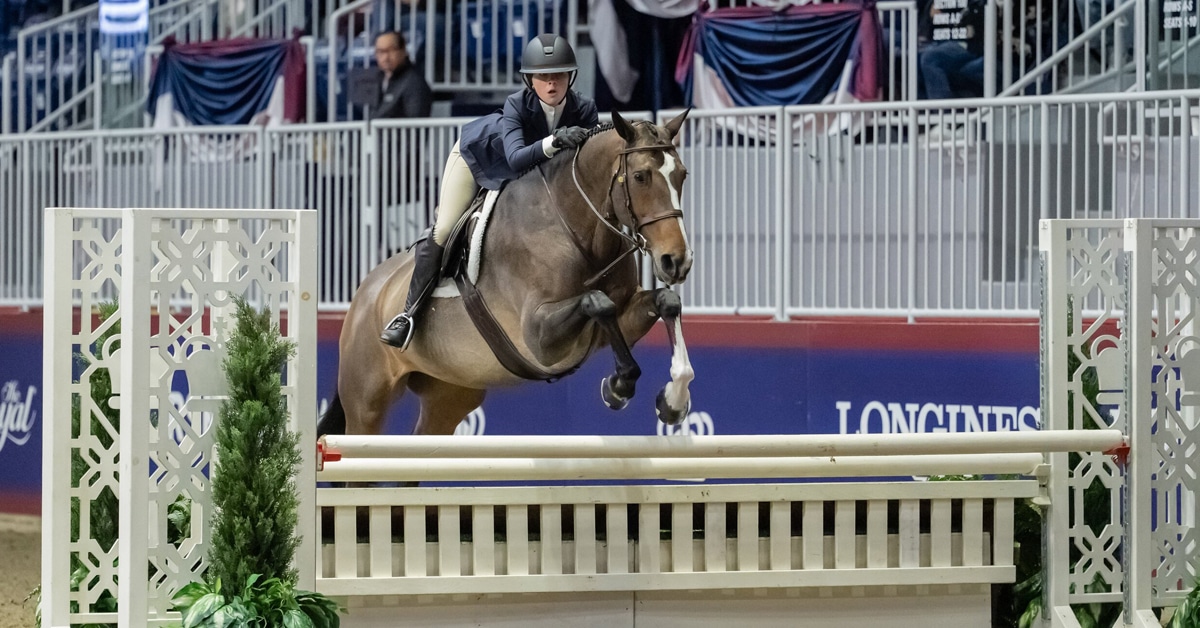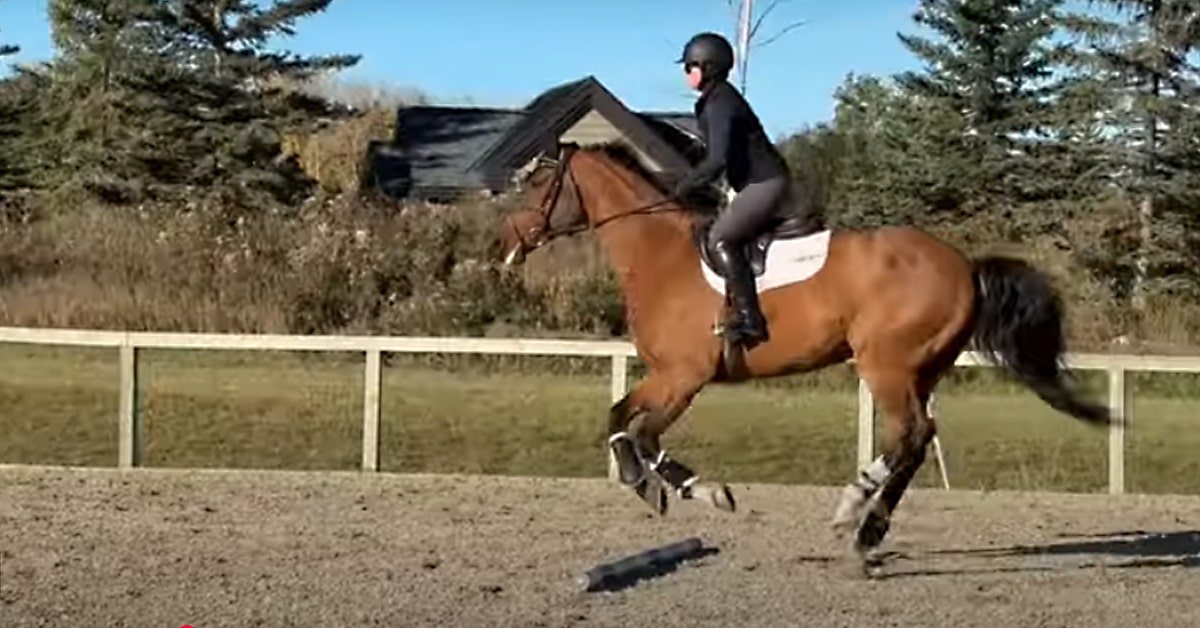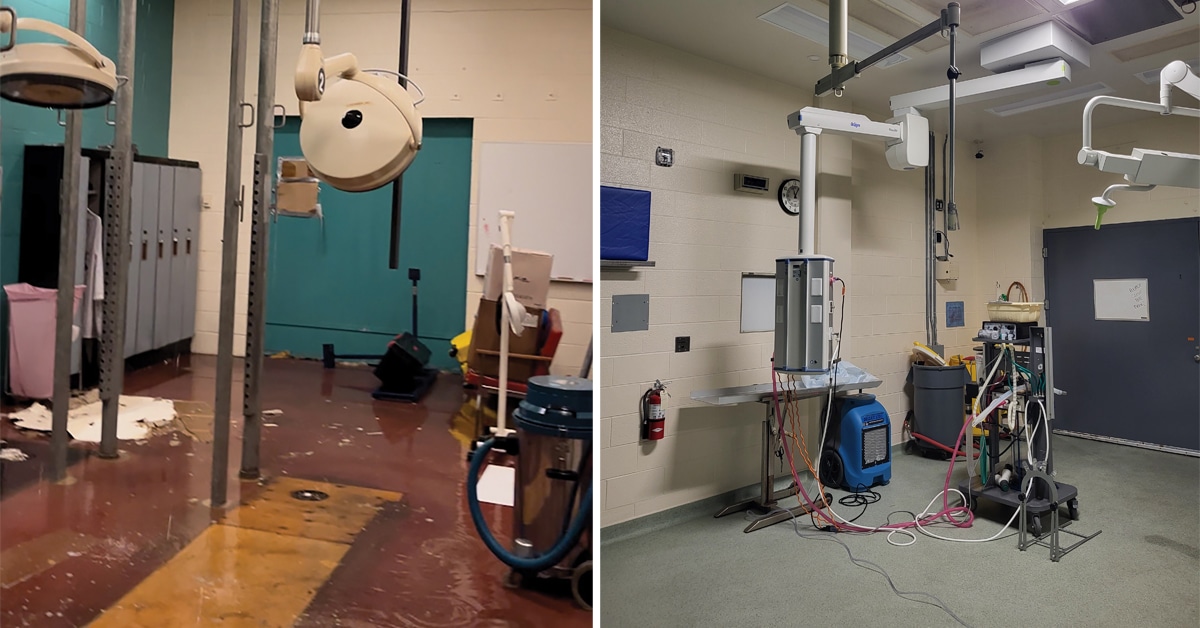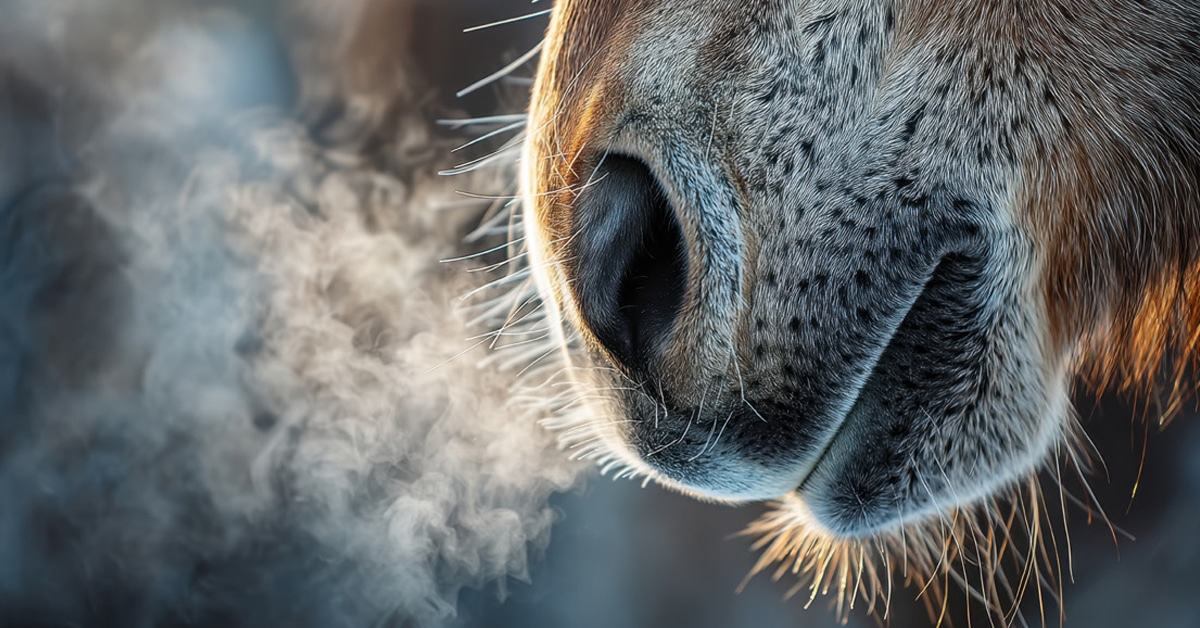Training horses for show jumping is much like teaching children – each student has their own natural aptitudes and inclinations, they will learn at their own rate, they will understand teaching techniques in their own way, and their capacity to learn on a given day can be affected by circumstances beyond what happens in the classroom/riding arena.
It is our goal as horse trainers to identify areas of skill development that need addressing, while being aware and understanding of our horse’s unique mindset and characteristics so that we don’t try and force one methodology and timing onto every horse. That is all to say: try not to get caught up on what is happening with everyone else’s horse as though that means anything for you and your horse. Really understand the goals of the sport and the exercises you set, so that you can best modify them and make sure they’re useful for your horse and where they’re at in their training.

The gymnastic setup.
This particular gymnastic uses a simple line on one side of the arena. Start by setting a cavaletti fairly close to the end of the arena to practice a short approach out of the corner. Set an oxer 41’ away from the cavaletti, then a vertical at 23’, and another cavaletti at 51’ heading into a short corner. If your arena space is smaller or larger, consider setting the last distance at either 41’ or 61’ as needed to either reduce or increase the number of strides there, respectively.
Using the distances we have set (41’-23’-51’), this should be a three-stride / one-stride / four-stride exercise.
Now that everything is measured, remove the poles from the vertical so that you start with just the cavalettis and oxer at a comfortable warm-up height for your horse’s level. Start by jumping the cavaletti, ride three strides to the oxer, and pull up in a straight line before the last cavaletti. We want to take advantage of the first few times warming up to measure our stride for the exercise, ensuring we get a normal three strides, then a downward transition in a straight line to make sure the horse remains focused on us and doesn’t get too excited with the open space ahead, while giving an opportunity to correct straightness as needed through the downward transition.
For example, if your horse is leaning to the right as you ask for the downward transition, ask for a leg yield off the right leg as you are doing the transition, making sure you relieve the pressure once they respond correctly.
If your horse feels like they are landing from the oxer and awaiting your instruction, try continuing over the final cavaletti in six strides. Remember to continue to use downward transitions as needed – sometimes horses can get excited once they know they get to continue out of the line, so going back a step and repeating the downward transition before the last cavaletti a time or two might be helpful here.
Once this part of the exercise feels accomplished – meaning your horse is staying focused, relaxed, and you are comfortable with the required stride length – let’s reverse the exercise and start with the other cavaletti, canter six strides to the oxer, and a quiet three strides to the final cavaletti. Finish this off with a nice downward transition on the landing to reaffirm the quiet three strides after the oxer.
A quick note about this stage of the exercise: before we put in the final vertical, we have an opportunity to encourage the horse to understand the requirements and expectations. It isn’t that interesting if you, the rider, can work really hard and “make it happen” while your horse is blissfully running off partly sideways doing its own thing. There are times when the skill we look to develop is the rider’s ability to be effective and make adjustments, but this exercise is designed to teach the horse that we expect rhythm, straightness, self-carriage, focus, and patience.
You may notice that the three strides after the oxer is very quiet, while it seemed like there was more space when we went the other way in the six strides after the oxer. There are plenty of reasons this could be, including simply having more time after the oxer to make small adjustments, or if we didn’t get up the six strides towards the oxer as easily as we made the three strides the other way, which would make the oxer a “bigger” feeling jump. If you find yourself in this situation, try and adjust your canter on your approach to the exercise in this second direction – come to the cavaletti on a bigger stride so that the six strides to the oxer requires a little balancing and shortening to make a quieter arrival. This should help the three strides after.
Now let’s add the vertical to the mix, and start our approach the original direction. This should be a nice quiet three strides to a normal one-stride to a quiet four strides. Because we ask the horses to take a full stride in the one-stride, we will land bigger than the four-stride needs to the cavaletti, which will force us to ask our horse to balance back to us. This is where we will hopefully notice the benefit of having repeated enough at the early stages that our horse will be attentive and listening well when we land from the one-stride, stretch up and secure our position, and ask them to shorten slightly.
If you land from the one-stride and know right away your horse’s mind has left the exercise, consider a downward transition before the cavaletti to call him back to the early stage of the training. Again, try not to do it for them, but rather encourage the horse to stay focused and attentive to subtle aids. The four-stride line doesn’t have to be perfect – remember, it should be a quiet four, not a normal four – we are looking for the horse to stay straight, in a consistent rhythm, and listen when you ask them to shorten their stride.
When this direction feels solid, finish off by reversing the exercise again. By this point, you and your horse should be comfortable with the distances and understand how they fit together.
Getting to finish the exercise in this direction should be a valuable confirmation of a successful training session. If you didn’t make it this far today, it is by no means a failure! Each sequential piece of the exercise allows us to build the tools we need to be able to achieve the next part easier, which I assure you, your horse will appreciate.
The Latest









